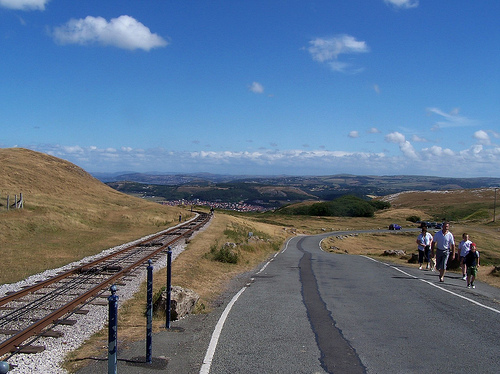
In my last post, rebutting Edward Glaeser, I mentioned the hidden costs of roads that he was not accounting for and the fundamental problem with assuming that any means of transportation has to be profitable in itself. Stephen B. Goddard does an admirable job of listing several of the costs we forget about that are assumed in driving in his book Getting There: The Epic Struggle between Road and Rail in The American Century.
- patrol highways
- clean polluted air
- insure that foreign oil flows freely to U.S. shores
- subsidize downtown park for millions of commuters
- dispose of millions of junked cars, tires, and batteries
- cover higher health-care costs associated with the breathing of gasoline fumes
- deal with fuel wastage and time lost in traffic jams
- cope with losses of life and human capacity in traffic accidents
- pay courts and judges to handle personal injury lawsuits
- pay auto insurance premiums.
Each of these bullet points deserves its own blog post. My general point is that no amount of taxes on cars or gasoline covers all of these costs to the country and the American consumer. Rail is not perfect and roads cannot be done away with. However, communities that depend more on rail for more of their traveling needs will also lower many other costs including auto insurance, health-care costs, patrol costs (including state police and ambulance duties), the pace of car and car part disposal, and the epic loss of life at the hands of highways.
The most dramatic of these costs for me is the human cost. 37,261 people died in vehicle accidents in 2008 and 41,259 in 2007. To put that in perspective, 58,228 American servicemen died in the Vietnam War.
Roads cannot and should not be demolished, but rails (high speed or not) are necessary to alleviate many of the costs, environmental and beyond that our country currently subsidizes by depending so heavily on our cars.

August 23, 2009
Infrastructure Investment Does Not End With Construction
Posted by meltzerm under Public Transportation, Transportation Commentary | Tags: Decaying Infrastructure, Federal Transit Administration, Getting There, I-35 W Bridge, Infrastructure, Maintenance costs, Minneapolis, New York Times, Roads, Russia, Sayano-Shushenskaya Dam, Siberia, stephen goddard, Transportation, Transportation Builders Association, United States |Leave a Comment
The New York Times published an article on the decaying infrastucture in Russia, in particular The Sayano-Shushenskaya hydroelectric dam in Siberia. While the United States does not have infrastructure falling apart in the same way, the I-35 W bridge tragedy in Minneapolis last year awoke the American conscience to the necessity of infrastructure upkeep and its costs. As we go forward with infrastructure investment in the 21st century and debate what means transportation are best and most economically efficient it is important to keep in mind the cost of maintenance going forward. The cost of transportation infrastructure is not truly depicted in the cost of construction, maintenance costs occur every year.
America has the twofold problem of historically not calculating the cost of maintenance when building transportation infrastructure and frequently choosing to build the cheapest option, which of course also usually deteriorates fastest. While Stephen B. Goddard’s references in his 1994 book, Getting There, are slightly dated, he also describes an awful lot of the infrastructure in this country:
I am not suggesting that the U.S. is in danger of approaching Russia’s level of difficulty. Rather, all I am suggesting is that as infrastructure debates go forward we examine the total cost of a system; the cost of maintenance, operation and construction. When we examine the cost of infrastructure on construction estimates alone we are practicing negligent economics. A road that must be rebuilt every 20 years is not actually as cheap as it first looks. We should invest more money up front to make our investments in infrastructure last. In addition, a change in federal procedure would benefit all, if allocations for transportation funding included commitment to upkeep of new infrastructure, for at least a period of time.